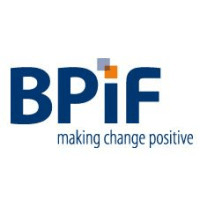The Myth: Electronic Communication Is More Environmentally Friendly Than Print And Paper
"Go paperless", "go green" and "save trees" are common themes these days as many corporations and governments encourage their customers and employees to switch to electronic transactions or communications.
But are these appeals to help the environment regardless of the facts?
Campaigns that seek to eliminate paper are often focused on a single characteristic and do not take into account every stage in the life cycle of both paper and on-line methods. Organisations that truly want to make responsible environmental choices should do so based on factual, verifiable information.
Customers’ preferences and online access are also important. Rather than asking which is better, paper or electronic communication, we should use this life cycle thinking to figure out which combination of the two has the least impact on the environment while best meeting social and economic needs.
' With a reading time of 30 minutes per day the environmental impact of a web based newspaper is, in general, in the same range as a printed newspaper's environmental impact. '
Swedish Royal Institute for Technology, Moberg et al, 2007, Page 5
When considering that Print and Paper is based on wood, a natural and renewable resource, and that over 70% of print and paper is recycled in Europe for reuse, it can be concluded that, in a multi-media world, print and paper may be the sustainable way to communicate.
Greenpeace,
The e-waste problem, 2013
The Problem of Greenwash In a UK survey conducted by Two Sides in November 2010, 43% of Banks, 70% Utilities and 30% Telecoms were making unsubstantiated ‘green’, ‘e-billing is better for the environment’, claims. On being challenged by Two Sides, 82% of these Greenwash messages were removed or amended.
Greenwash needs to be challenged wherever it is found.
From newspapers to magazines, from photocopies to leaflets, we believe Print and Paper cannot be beaten for sheer flexibility, impact and sustainability. As you have read, there are two sides to paper and you should now feel confident about using it. Paper is made from renewable resources, recyclable and produced by an environmentally-conscious industry whose future depends on planting more trees than it consumes, and which is progressively improving standards in the whole supply chain.
This booklet can only scratch the surface of all the issues surrounding the responsible use of paper, print and packaging. To know more about the production and consumption of paper and its impact upon the environment, go to the Two Sides website and discover more facts about our industry.
' Forestry, paper and packaging are among the most sustainable industries in existence.'
CEO Perspectives 2008, PricewaterhouseCoopers, Page 11
Sources
http://www.twosides.info/Digital-media-also-has-environmental-impacts
